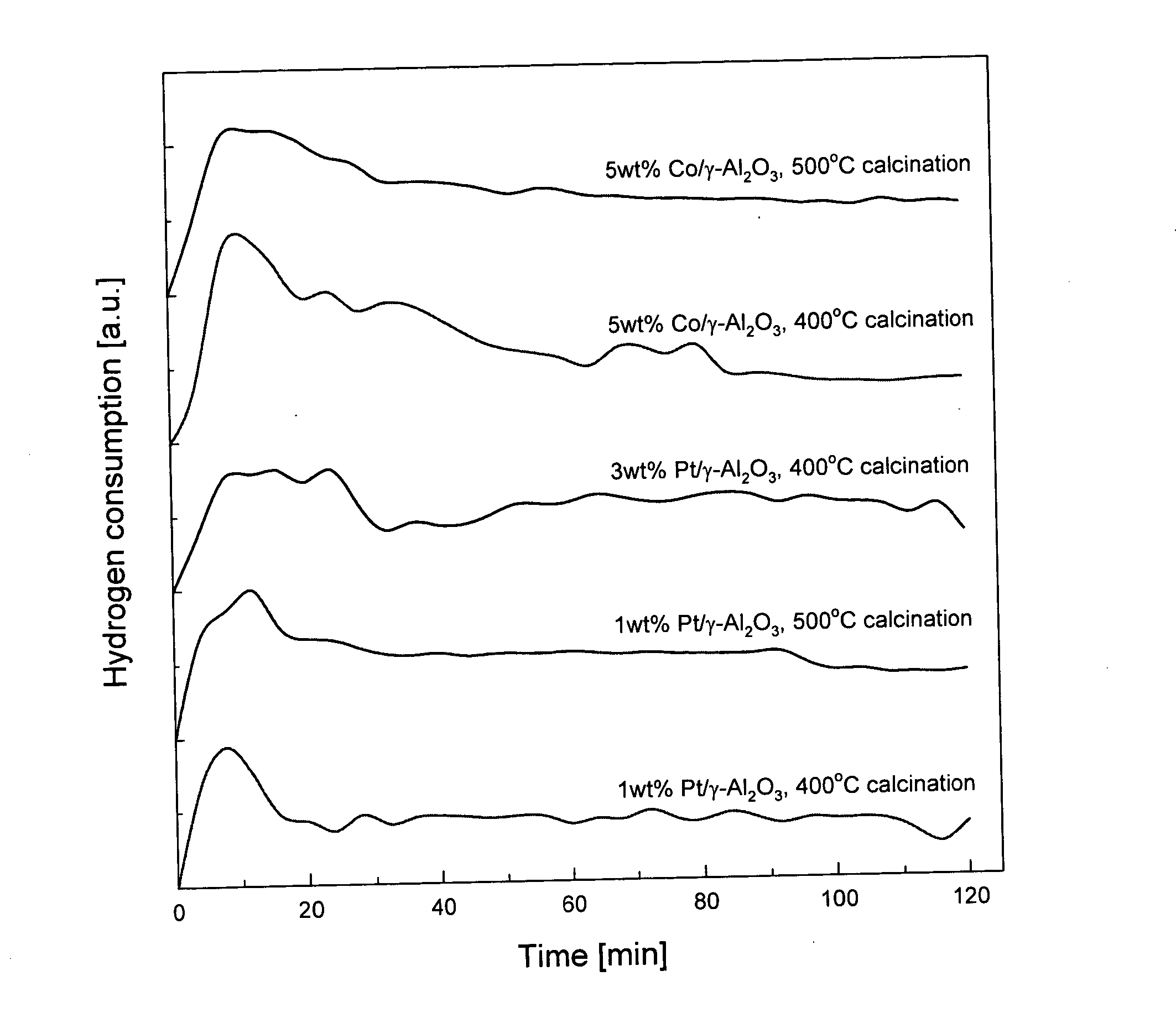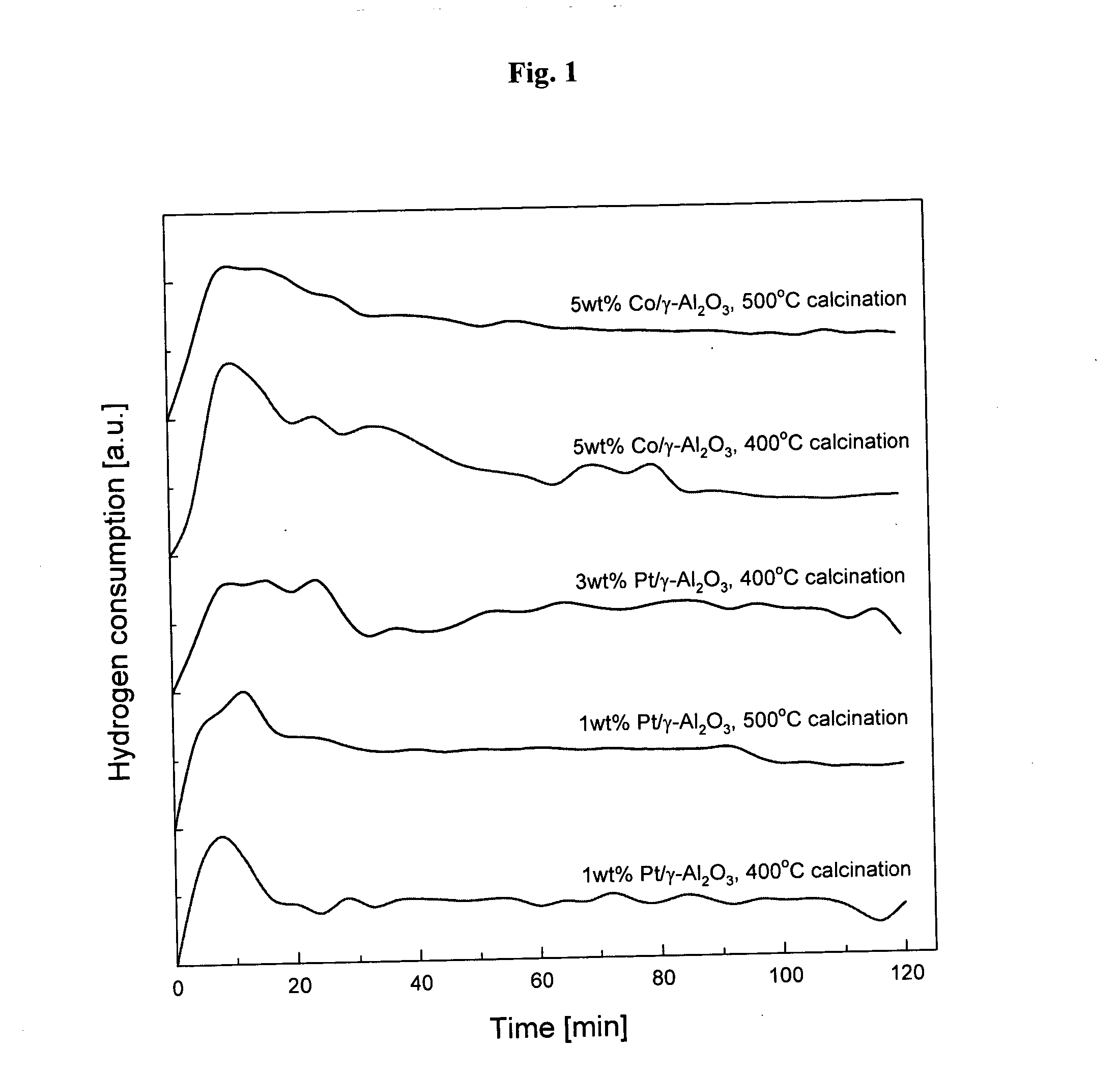Reduction method of catalysts using non-thermal plasma
- Summary
- Abstract
- Description
- Claims
- Application Information
AI Technical Summary
Benefits of technology
Problems solved by technology
Method used
Image
Examples
embodiment 1
[0039] 1 wt % Pt / γ(gamma)-Al2O3 catalyst was produced by an incipient wetness method using carriers of alumina and precursor of H2PtCl6.6H2O. Then 1 g of the catalyst was filled into the bottom of a cylinder-wire type dielectric barrier discharge reactor having an interior volume of 10 cc. Then, while hydrogen and nitrogen mixed by volume ratio of 1:4 was being flowed into the dielectric barrier discharge reactor, non-thermal plasma was generated. Reduction reactions progress as hydrogen molecules activated by plasma combine with oxygen atoms on the surface of metal oxide catalysts carried by alumina to form water.
[0040]FIG. 1 shows the amount of hydrogen consumptions as time elapses when metal (such as platinum and cobalt) catalysts are reduced using non-thermal plasma in accordance with the present invention. As shown in FIG. 1, hydrogen is consumed rapidly at the initial stage of reactions and the reduction of platinum catalysts is almost complete within 40 minutes.
[0041] To ch...
embodiment 2
[0048] 5 wt % Co / γ-Al2O3 catalyst was produced by an incipient wetness method using carriers of alumina and precursor of Co(NO3)2.6H2O. Then 1 g of the catalyst was filled into the bottom of a cylinder-wire type dielectric barrier discharge reactor having an interior volume of 10 cc. Then, while hydrogen and nitrogen mixed by volume ratio of 1:4 were being flowed into the dielectric barrier discharge reactor, non-thermal plasma was generated. Reduction reactions progress as hydrogen molecules activated by plasma combine with oxygen atoms on the surface of metal oxide catalysts carried by alumina to form water.
[0049]FIG. 1 shows the amount of hydrogen consumptions as time elapses when metal (such as platinum and cobalt) catalysts are reduced using non-thermal plasma in accordance with the present invention. As shown in FIG. 1, hydrogen is consumed rapidly at the initial stage of reactions and the reduction of platinum catalysts is almost complete within 60 minutes.
[0050] To check t...
PUM
| Property | Measurement | Unit |
|---|---|---|
| Fraction | aaaaa | aaaaa |
| Fraction | aaaaa | aaaaa |
| Fraction | aaaaa | aaaaa |
Abstract
Description
Claims
Application Information
 Login to View More
Login to View More - R&D
- Intellectual Property
- Life Sciences
- Materials
- Tech Scout
- Unparalleled Data Quality
- Higher Quality Content
- 60% Fewer Hallucinations
Browse by: Latest US Patents, China's latest patents, Technical Efficacy Thesaurus, Application Domain, Technology Topic, Popular Technical Reports.
© 2025 PatSnap. All rights reserved.Legal|Privacy policy|Modern Slavery Act Transparency Statement|Sitemap|About US| Contact US: help@patsnap.com



